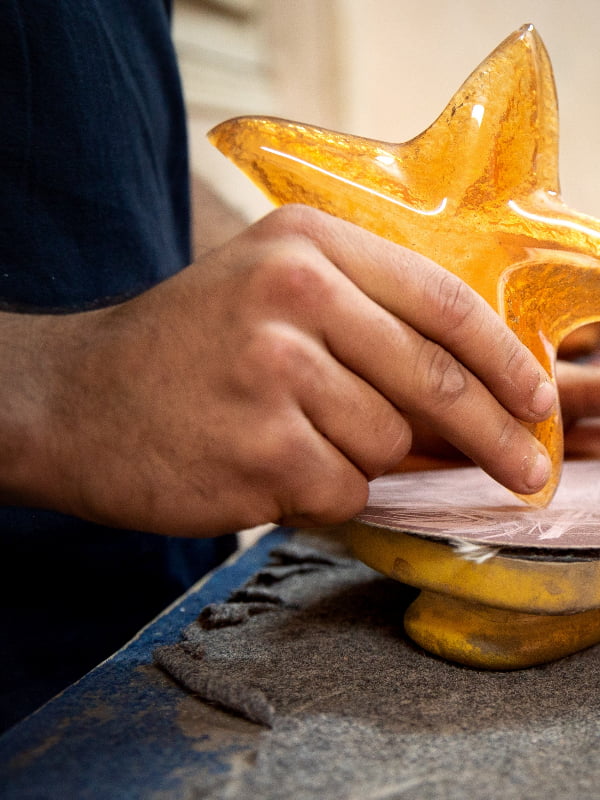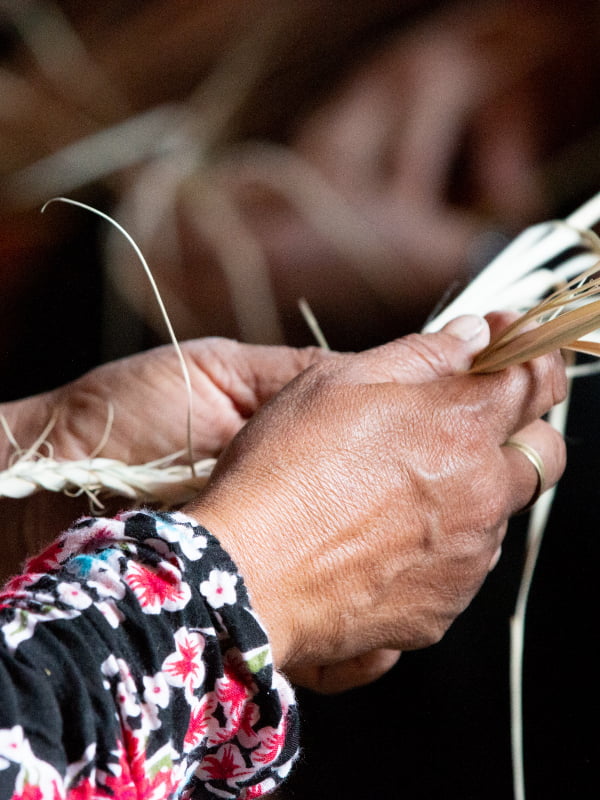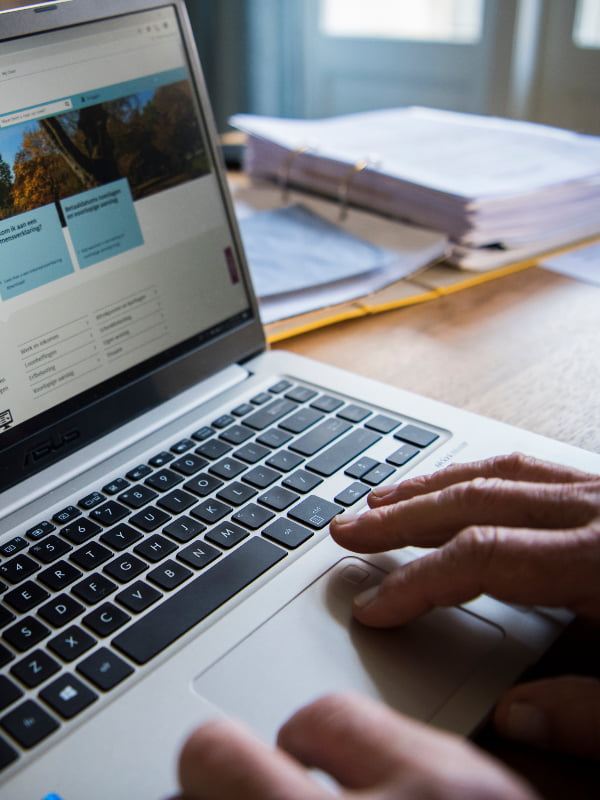Subsidy scheme for large-scale hydrogen production using an electrolyser (OWE)
Would you like to produce renewable (sustainable) hydrogen using an electrolyser? And does this electrolyser have a production capacity of at least 0.5 megawatts? Then apply for a subsidy under the scheme for large-scale hydrogen production using an electrolyser (OWE).
Budget and application period
11 new hydrogen projects accelerate development of sustainable hydrogen
11 new projects with large electrolysers are being launched by companies in the Netherlands, which will produce sustainable hydrogen with the help of the OWE subsidy. Together, these electrolysers have a capacity of approximately 602 megawatts (MW). Refineries, the chemical industry, and fuel stations can use this hydrogen to further green their operations and reduce CO2 emissions.
Who is eligible?
This subsidy is for companies that build and use hydrogen power generation facilities to produce renewable hydrogen. For this you use an electrolyser that has a production capacity of at least 0.5 megawatts.
The subsidy will only be granted if you produce fully renewable hydrogen with your eletrolyser. Projects that have already been given subsidies for the SDE++ scheme or the OWE scheme of 2023 will not be granted a subsidy.
Note: do you want to build an installation that connects to the electricity grid? Before applying for a subsidy, check whether it is possible to connect your new installation to the electricity grid in your region (grid congestion, in Dutch).
What are you given a subsidy for?
You are given a subsidy for the investment costs of your power generation facility (i.e. the investment part). And for producing the hydrogen using this facility for at least 5 and at most 10 years (i.e. the operating part).
You calculate your subsidy amount for the investment and operating part using the ‘Investment budget and feasibility study’ model. This model is available on the Applications page under the ‘Substantiate the feasibility of your project’ drop-down menu. We explain the calculations below.
You will be given up to 80% of the costs required for building your power generation facility. You can apply for a subsidy for the following costs:
- machinery and equipment that the hydrogen power generation facility consists of, such as the electrolyser, hydrogen purification, gas/liquid separator, cooling equipment, equipment for controlling the machine, and measuring production and safety;
- hydrogen storage for 24 hours of production at most (based on the nominal capacity of the electrolyser per hour times 24);
- a battery of up to 1 megawatt and up to 2 megawatt hours, both per megawatt of direct current input power from the electrolyser;
- the costs of project engineering, project development and legal fees if you include these costs on your company’s balance sheet and to the extent you incurred these costs after submitting the subsidy application;
- the investment costs in buildings and land (only for the hydrogen power generation facility);
- materials and auxiliary materials during the construction;
- for building infrastructure (only for connecting the electrolyser to the electricity grid, or to a hydrogen distribution grid on the hydrogen side);
- a hydrogen compression plant up to a maximum of 70 bar for delivering the hydrogen to a hydrogen grid.
Calculate your subsidy amount for the investment
Have you drafted a realistic budget for the costs of your project? You calculate the subsidy amount of the investment part (your subsidy amount for investment) by adding up the eligible costs of building your hydrogen power generation facility and multiplying it by the subsidy percentage you apply for. By ‘eligible costs’ we mean all the expenses incurred that are covered by the subsidy (see the above list).
Have you already received other subsidies?
If you have previously been granted a subsidy for investing in the same power generation facility, then please state this in your application. You then deduct these amounts when determining the maximum subsidy amount for the investment. The investment subsidy, which is capped at 80%, includes any subsidies that you may have received previously.
When can you expect the investment part?
You are given the investment part when you are building your power generation facility.
The costs of generating renewable hydrogen are higher than the costs of generating hydrogen from a steam methane reformer (SMR) fuelled by natural gas, which is why the production of renewable hydrogen is generally not profitable. The subsidy scheme for large-scale hydrogen production using an electrolyser reimburses this difference between the cost of generating renewable hydrogen and the cost of generating hydrogen with an SMR, i.e. the operating shortfall. For this reason, you are given a subsidy for the operating part along with the subsidy for the investment part.
The operating part (the amount of the operating subsidy) consists of a subsidy per kilogramme of fully renewable hydrogen produced. During the term of the subsidy, you will be given the difference between your average cost price for renewable hydrogen and a correction amount. This correction amount consists of the costs not incurred for producing hydrogen using a natural gas SMR (the reference investment).
If the costs you have avoided paying rise due to a hike in the price of gas, for instance, you will be given less subsidy. If the costs you have avoided paying fall, you will be given more subsidy. The correction amount has a lower limit. If the price of fossil hydrogen falls below that, you will be given the operating shortfall up to that lower limit. The Netherlands Environmental Assessment Agency calculates the provisional and final correction amounts.
The figure below gives an example of how the subsidy scheme for large-scale hydrogen production may be higher in one year than in another.
Correction amount formula
We calculate the correction amount of the hydrogen price with the formula:
- 0.29 + 49 x average higher heating value (HHV) market price (TTF) over a year
For the provisional correction amount of the OWE for 2023, the formula is:
- 0.29 + 49 x 0.0755 €/kWh HHV (average TTF 1-9-2021 to 31-8-2022 cal-23) = 3.9895 €/kg
This calculation is the same as for the SDE++. More information can be found on the PBL website.
Calculate your subsidy amount for operations
We calculate the operating part per calendar year using the following formula:
- Amount per calendar year = (amount of fully renewable hydrogen produced in kg in that calendar year + any accumulated excess production from previous years if there is underproduction in that calendar year) x (production price of fully renewable hydrogen – final correction amount for that calendar year).
The maximum total operating subsidy amount is then the sum of all the amounts per calendar year, calculated over the period the subsidy was applied for. This is the formula:
- Maximum total operating subsidy amount = annual average amount of fully renewable hydrogen to be produced x (production price of fully renewable hydrogen – lower limit) x the duration of the subsidy.
Sometimes the production price in a calendar year is lower than the final correction amount determined. If that is the case, you will not be given a subsidy.
When can you expect the subsidy for the operating part?
You get a subsidy for the operating part spread over a minimum of 5 and a maximum of 10 years after your facility is built. The operating part is for the fully renewable hydrogen actually produced.

The operating part consists of a subsidy per kilogram of produced hydrogen. The subsidy you receive during the subsidy period of 5-10 years is the difference between the average cost of the renewable hydrogen and the correction amount. This correction amount consists of the exclusive costs for the producer of hydrogen with a steam methane reforming plant (SMR) on natural gas (the reference investment). The correction amount has a lower limit.
If vertical costs increase due to, for example, a higher gas price, you will receive less subsidy. If the fundamental costs decrease, you will receive more subsidy. It may happen that the production price in a calendar year is lower than the final correction amount. In that case you will not receive a subsidy.
Conditions for this subsidy scheme
Check whether your application complies with these conditions:
- You may only apply for up to half of the available subsidy. That is € 499,165,000.
- The total subsidy amount for investment and operation is up to € 9 per kilogram of fully renewable hydrogen. The subsidy amount of €9 per kilogramme is derived from the maximum of € 1,000 in subsidy per each ton of carbon dioxide not produced. More information about subsidy amounts is available under ‘What are you given a subsidy for?’.
- You may determine the operating period of the subsidy (rounded to whole years), as long as it is a minimum of 5 and a maximum of 10 years.
- You may submit one application for each site.
- You may not yet make commitments that cannot be reversed for the facility itself. This means that you:
- do not yet make any payments for the facility;
- you do not sign for any final awarding of the contract. However, you are allowed to sign an awarding of the contract on the condition that you get the requisite subsidy;
- you may not begin to carry out the activities listed in your project plan.
- You may not be dependent on other subsidies. You are applying for this subsidy to make your project financially feasible. In doing so, you should not be dependent on other subsidies that you have yet to receive. You may not combine this subsidy scheme for large-scale hydrogen production using an electrolyser with the Sustainable Energy Production and Climate Transition Incentive Scheme (SDE), a previously received subsidy scheme for large-scale hydrogen production using an electrolyser or the energy investment allowance (EIA). Combining it with other subsidies, such as a subsidy for the ‘Important Project of Common European Interest’ (IPCEI), is possible under this subsidy scheme for large-scale hydrogen production if it does not interfere with the other subsidy.
Requirements for the power generation facility
Your power generation facility must meet the following requirements:
- Your facility must have a nominal electrical input power of at least 0.5 megawatts.
- The nominal electrical input power of the electrolyser is the direct current input power of the electrolyser at the beginning of its useful service life.
- Your facility may be linked to a wind or solar electricity generation plant using a direct line. The facility may also be connected to the electricity grid with a connection (i.e. it is a grid-connected facility). A combination of both is also possible. Other renewable energy sources, such as a waste-to-energy plant, are not possible.
- The hydrogen has to be fully renewable. The requirements may differ depending on the connections mentioned above. The requirements for this are set out in Delegated Act (EU) 2023/1184.
- If your facility is able to produce non-renewable hydrogen, then the reduction in the emission of greenhouse gas from the hydrogen produced must be at least 70%. This requirement is set out in Delegated Act (EU) 2023/1185.
- If the pressure of the hydrogen in your plant increases to a maximum of 70 bar, the subsidy covers the costs of the compressor. Compression to an extremely high pressure is intended for storage and transport, and is therefore not covered by the subsidy.
Questions or advice?
Do you have any questions about this subsidy or would you like advice? We have gathered all questions and answers. Is your question not listed? Then send an email to owe@rvo.nl.
How does the subsidy work?
This subsidy is being put out to tender. That means that the companies compete for the available subsidy. The projects that get the highest score will get the subsidy. We do this based on a ranking. The ranking is determined based on the amount of subsidy you apply for, including previously received subsidy in proportion to the electrical input power of your electrolyser. We refer to this as the ranking amount. You are therefore more likely to get a subsidy if you apply for a lower subsidy amount per megawatt of your electrolyser’s nominal power rating. The lower the amount, the more likely you are to get a subsidy.
A calculation tool is given on the Applications page, which you can use to calculate your ranking amount.
After your application
After submitting your application, you will be sent a letter stating the decision. If your subsidy is awarded, the letter will state the following:
- the maximum subsidy amount for the investment part;
- when you will receive the advances;
- the maximum amount of your subsidy for the operating part;
- for how long you will be given the subsidy (period of the subsidy).
Read more about applying for OWE-subsidy.
If your subsidy application has been approved, and you begin implementing your project, or you would like to know what the implementation phase involves, then consult the Implementing your project page, where you will find all the relevant information.
Advance payments and adjustments
You will receive subsidy advances for the investment part two weeks after you start building your facility. For the operating part, you will receive the subsidy once you have put the facility into operation. Your facility also has to be permanently registered with VertiCer. All the information about this is on the Producing hydrogen using your facility page.
See which projects are receiving OWE subsidy
Do you want to know which projects are currently receiving OWE subsidy? Read more about these projects in our project database (in Dutch).
Where are these regulations laid down in the law?
The scheme was published in the Government Gazette on 19 August 2024. We have based the information about this scheme on the following legislative texts (in Dutch):
- Legal text of the OWE 2024
- The decision to open the OWE 2024 (Openstellingsbesluit)
- Provisional corrective amounts OWE 2024
- Publication Government Gazette (29 september 2023)
- Consolidated version of the scheme (original basic text incorporating all amendments from 28-10-2023 to date)
- Amendments to Article 5.3 of the scheme
The requirements to be met when producing fully renewable hydrogen can be found in the following delegated acts:
Reference works
For this scheme, we held a market consultation this year. The following downloads contain more information on this (in Dutch).
About this subsidy scheme
In an effort to meet climate targets, the government’s intention is to encourage the production of renewable hydrogen. Renewable hydrogen is produced with electricity generated by solar and wind power. Large electrolysis plants are needed to make the required amount of hydrogen. The purpose of this subsidy scheme is to make the investment in and operation of electrolysis plants financially attractive.
This subsidy scheme for large-scale hydrogen production using an electrolyser (the OWE scheme) is a combination of a subsidy for the investment phase and a subsidy for the operating phase. In other words, you get a subsidy for the investment costs for building the facility, and to produce hydrogen using this facility (i.e. the operation phase) to make it profitable for a minimum of 5 and a maximum of 10 years.
- Ministry of Climate Policy and Green Growth



